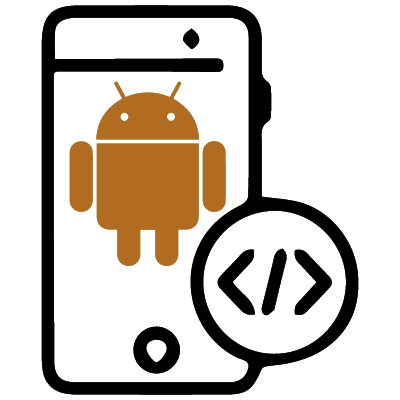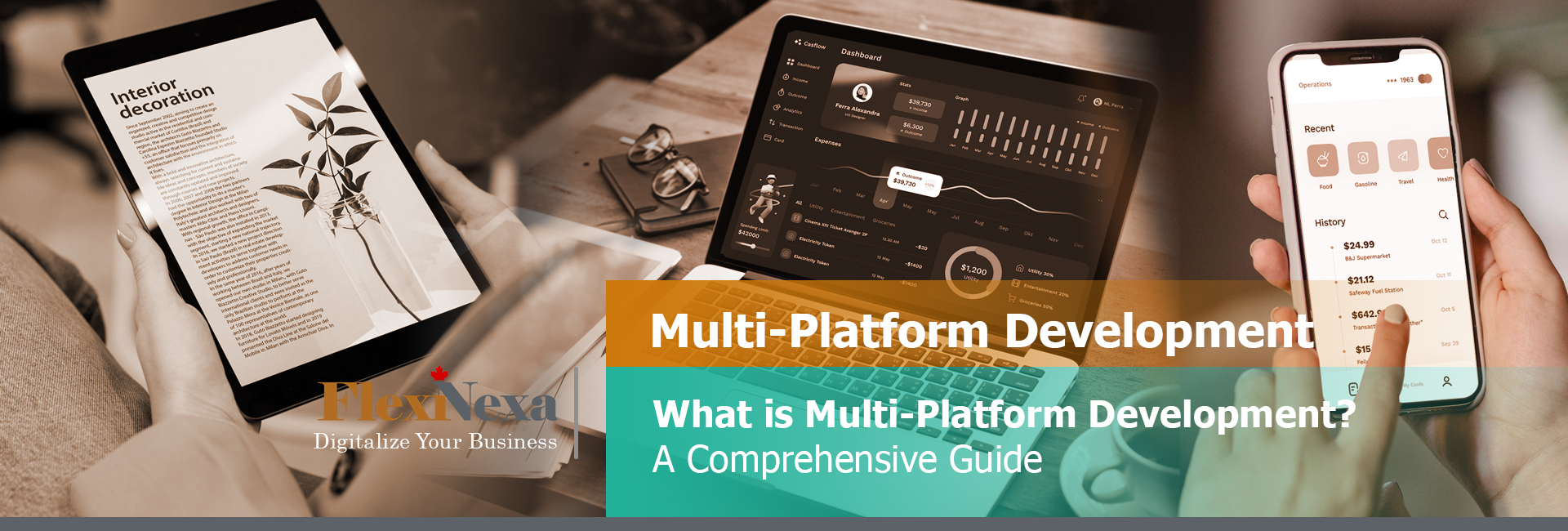In today’s world, the need for software that can run on multiple platforms is more important than ever. Multi-Platform Development refers to the development of software that can operate simultaneously on various operating systems and devices. This article has been produced by the Research and Development unit of Flexinexa to provide a comprehensive overview of this concept and offer detailed information about it.

Multi-Platform Development, also known as cross-platform development, is a method of programming that allows developers to create applications that can run on multiple operating systems and devices. This approach has become increasingly important in the modern software development landscape, where users expect seamless experiences across different devices such as smartphones, tablets, and desktop computers.
An terrific example of a multi-platform is Microsoft teams. Microsoft teams is a verbal exchange and collaboration tool that supports numerous structures, inclusive of windows, macOS, iOS, Android, and net browsers. This guarantees that users can get right of entry to teams from their desktop computer systems, laptops, pills, and smartphones, no matter the operating machine.
In this comprehensive guide, we will explore the fundamentals of multi-platform development, including its benefits, challenges, and the key frameworks that facilitate this approach. We will delve into popular frameworks such as React Native, Flutter, and Xamarin, which have revolutionized the way developers approach app development. Additionally, we will discuss the best practices for achieving optimal performance and user experience in multi-platform programming.
history of Multi-Platform improvement
The concept of multi-platform development has developed extensively over the last few a long time. Here’s a brief assessment of its records:
Early Beginnings
1980s-1990s: in the early days of computing, software turned into mainly advanced for particular hardware and running structures. This meant that packages needed to be rewritten absolutely for every platform. The idea of creating a unmarried codebase that might run on multiple structures was not yet mainstream.
Upward thrust of cross-Platform gear
Late 1990s- Early 2000s: The rise of the net and the want for internet packages caused the development of move-platform equipment like Java. Java’s “write once, run everywhere” philosophy changed into a great step toward multi-platform development, allowing applications to run on any machine with a Java digital system (JVM).
Evolution of cell systems
Mid 2000s: The creation of smartphones and the proliferation of cellular working structures like iOS and Android supplied new challenges. Developers needed to create separate variations of apps for every mobile platform, leading to increased development time and fees.
Emergence of modern Frameworks
Inside the 2010s, the call for for more efficient multi-platform solutions led to the creation of modern-day frameworks. PhoneGap/Cordova introduced the concept of wrapping web applications in native packing containers to get right of entry to tool functions. Xamarin enabled builders to use C# to write apps that might run on each iOS and Android. React native, developed with the aid of fb, allowed developers to apply JavaScript and React to create local apps for iOS and Android from a single codebase. Flutter, released with the aid of Google, makes use of the Dart programming language and allows high-overall performance, natively compiled packages throughout mobile, web, and computing device systems.2020s: Multi-platform improvement has become extra state-of-the-art, with frameworks constantly improving in phrases of performance, usability, and characteristic set. Kotlin Multiplatform is an instance of a contemporary method, permitting shared codebases throughout a couple of structures while retaining native performance and flexibility.
Current State
2020s: Multi-platform development has become more sophisticated, with frameworks continuously improving in terms of performance, usability, and feature set. Kotlin Multiplatform is an example of a modern approach, allowing shared codebases across multiple platforms while maintaining native performance and flexibility.
multi-platform development provide access to essential features and information anytime and anywhere
What are the advantages and disadvantages of multi-platform development?
Benefits:
Price-efficiency:
Multi-platform development permits developers to jot down a single codebase that may be deployed across multiple platforms including iOS, Android, and the net. This approach extensively reduces development expenses as it gets rid of the need for separate groups to build and keep special versions of the app.
Time-Saving:
When you consider that developers most effective want to write one codebase, the time required to launch an app on a couple of systems is significantly decreased. This unified technique method that updates and malicious program fixes can be deployed concurrently across all systems, speeding up the overall development cycle.
Uniformity:
A single codebase ensures a consistent user experience across different structures. This uniformity is vital for logo identification and person delight as customers anticipate a comparable enjoy irrespective of the device or working gadget they may be the usage of.
Ease of upkeep:
Preserving one codebase is less complicated and more efficient than coping with a couple of native codebases. Adjustments made to the shared code replicate across all platforms, reducing the complexity and time required for upkeep.
Wider reach:
Deploying an app on multiple systems lets in agencies to attain a broader target market. This improved accessibility can lead to a bigger user base, greater engagement, and potentially better revenue.
Frameworks and tools:
Popular frameworks which includes React local, Flutter, and Xamarin provide effective tools and libraries that facilitate multi-platform improvement. These frameworks come with great documentation, network support, and built-in additives that simplify the improvement process.
Negative aspects:
Performance issues:
Go-platform apps frequently be afflicted by performance bottlenecks due to the fact they introduce an abstraction layer between the code and the device’s hardware. This accretion can slow down app performance, specially for aid-intensive packages.
Restrained get right of entry to to local capabilities:
At the same time as multi-platform frameworks try to provide complete APIs, they’ll not provide full get right of entry to to all native capabilities. This issue can prevent the improvement of apps that require deep integration with platform-specific functionalities.
Large App size:
Multi-platform apps generally tend to have large report sizes because they encompass additional libraries and resources to aid more than one platforms. This boom in size can have an effect on download times and soak up more garage space on customers’ devices.
Complex Debugging:
Debugging multi-platform apps can be more tough than debugging native apps. The introduced complexity of the abstraction layer and the variations in how every platform handles certain functions could make figuring out and resolving problems more tough.
UI/UX demanding situations:
Accomplishing a native appearance and feel may be difficult with multi-platform improvement. Every platform has its very own design pointers and user expectations, and catering to all of them within a single codebase can result in a compromised user experience.
Dependence on Framework Updates:
Multi-platform development is predicated heavily on the frameworks used. If a framework becomes outdated or the builders discontinue its assist, it may pose giant demanding situations for preserving and updating the app.

What are the main variations among multi-platform and go-platform development?
Multi-platform and cross-platform development are frequently used interchangeably; however, they have wonderful differences in their procedures and results. Right here’s a detailed evaluation:
Definitions:
Multi-Platform development: This approach includes growing separate variations of an utility for each platform, typically the usage of the local languages and gear of every platform (e.g., fast for iOS, Kotlin for Android). It guarantees the application takes full benefit of the platform’s unique features and talents.
Pass-Platform development: This approach specialises in writing an unmarried codebase that can run on multiple platforms. Pass-platform frameworks like React Native, Flutter, and Xamarin are used to bridge the space among extraordinary working systems.
Codebase and development approach:
Multi-platform development: requires multiple codebases, every written in the local language of the target platform. This results in better preliminary development attempts and prices, but doubtlessly higher optimisation and overall performance.
Pass-Platform development: makes use of an unmarried codebase to goal a couple of structures, lowering the overall improvement time and price. However, it won’t absolutely exploit platform-unique features as efficaciously as local improvement.
Performance:
Multi-Platform development: programmes commonly have better performance because they’re optimised for the particular platform they run on. There’s no abstraction layer that can make the app run quicker and more efficiently.
Pass-Platform development: may be afflicted by overall performance troubles because of the additional abstraction layer between the code and the native platform. Even though frameworks like Flutter and React Native try to decrease those issues, native apps normally have the edge in performance.
Get right of entry to local capabilities:
Multi-platform development gives full access to all local functions and APIs, allowing developers to utilise the entire range of functionalities provided via the platform.
Pass-Platform development: provides get-right of entry to most local functions, but some advanced or unique functionalities might require custom local modules or plugins, which can complicate the codebase.
User enjoy (UX) and Interface:
Multi-platform development: ensures a greater proper and tailor-made user revel in as the UI is designed in line with the platform’s tips. This results in higher adherence to design ideas and user expectations.
Pass-Platform development: even as frameworks like Flutter and React Native provide effective equipment for developing close-to-local experiences, reaching the precise look and experience of a native app may be challenging and might require extra customisation.
Development and preservation costs:
Multi-Platform development: higher charges due to the want for separate development groups for every platform. Preservation is likewise more expensive, as updates and malicious programme fixes want to be implemented throughout all variations.
Pass-Platform development: normally lower fees as an unmarried improvement team can manage all structures with one codebase. Protection is extra trustworthy, with updates and trojan horse fixes being implemented across all systems concurrently.
Time to marketplace:
Multi-Platform development: longer time to market due to the want to broaden and take a look at separate applications for each platform.
Pass-Platform development: quicker time to market because the equal codebase is used across a couple of systems, making an allowance for simultaneous testing and deployment.

Key Frameworks for Multi-Platform improvement
Numerous frameworks are extensively used in multi-platform improvement to create packages that run smoothly on diverse operating structures. Here are some of the key frameworks:
1. React native
Evaluation: evolved by Facebook, React Local permits developers to construct mobile apps using JavaScript and React. It enables the introduction of natively rendered apps for iOS and Android using an unmarried codebase.
Key capabilities:
Hot Reloading: allows builders to see modifications in actual-time without recompiling the entire app. Reusable additives: permits using reusable additives throughout exceptional elements of the app. Sturdy network aid: huge documentation and a huge community of developers provide adequate assets and libraries.
2. Flutter
Evaluate: Created by Google, Flutter makes use of the Dart programming language and gives a comprehensive framework for building natively compiled applications for mobile, net, and computing devices from a single codebase.
Key capabilities:
Rapid improvement: With features like warm Reload, builders can quickly construct and iterate on their applications. Expressive and bendy UI: gives a wealthy set of customisable widgets to create native interfaces. Overall performance: gives excessive performance by way of compiling to native ARM code.
3. Xamarin
Assessment: Owned via Microsoft, Xamarin lets in developers to use C# and.Net to create go-platform cellular packages. It offers tools to write local Android, iOS, and Home Windows apps with shared code.
Key features:
Local overall performance: access to local APIs and controls guarantees performance near local applications. Single Language: enables development in C# for all platforms. Integration with visible Studio: Seamlessly integrates with Microsoft’s development surroundings, improving productivity.
4. Ionic
Assessment: Ionic is an open-source framework for constructing move-platform cell apps using web technology like HTML, CSS, and JavaScript. It focuses on hybrid cellular app development.
Key functions:
Net technology: leverages current internet improvement abilities to construct cell apps. Wide variety of plugins: gives numerous plugins to get right of entry to native device features. Integration with Angular: initially built to work with Angular, it now helps multiple front-end frameworks like React and Vue.Js.
5. Cordova/PhoneGap
Evaluation: Apache Cordova, formerly known as PhoneGap, lets in developers to create cell apps using HTML, CSS, and JavaScript. It wraps the internet app in a native field, giving access to native tool functionalities.
What future tendencies may be anticipated in multi-platform development?
The landscape of multi-platform development is constantly evolving, pushed by means of technological advancements and converting market demands. Right here are a few destiny traits that may be predicted in this discipline:
1. Improvement in overall performance and local integration
Multi-platform development: future frameworks will likely focus on enhancing overall performance and closer integration with local APIs to limit the overall performance hole between native and move-platform apps.
Frameworks: React Local, Flutter, and Xamarin are predicted to beautify their competencies to offer close to-local performance, making multi-platform apps more aggressive.
2. Expanded Adoption of Flutter
Flutter: With Google’s sturdy backing and non-stop updates, Flutter is expected to benefit more reputation. Its capability to construct apps for cellular, internet, and computing devices from a single codebase makes it a versatile preference.
Programming: the usage of Dart, Flutter’s programming language, is in all likelihood to boom as extra developers adopt the framework.
3. Improved developer tools and atmosphere
Cross-platform improvement: tools and environments become greater state-of-the-art, supplying higher debugging, testing, and performance tracking competencies.
Frameworks: stronger integration with famous IDEs and more sturdy libraries and plugins will make frameworks like React Native and Xamarin more attractive.
4. Integration of AI and device learning
App improvement: AI and gadget mastering become quintessential in app development, allowing more personalised and smart consumer stories.
Frameworks: Multi-platform frameworks will integrate extra tools and libraries to assist AI and ML abilities seamlessly.
5. Increased attention on security
Cell Apps: As cellular apps handle extra touchy facts, there could be a stronger emphasis on security functions.
Frameworks: count on multi-platform frameworks to contain extra robust security features and compliance gear to guard consumer information and make certain privateness.
6. Growth of revolutionary net apps (PWAs)
Pass-Platform Programming: PWAs will continue to grow in popularity as they offer an internet-based technique for multi-platform improvement that provides a local-like experience.
App development: The capability to work offline, offer push notifications, and be installable on the home screen will make PWAs a key element of multi-platform strategies.
7. More focus on AR/VR abilities
App improvement: Augmented reality (AR) and digital truth (VR) will see improved integration in multi-platform apps, presenting immersive person reviews.
Frameworks: expect frameworks to add extra assistance for AR/VR improvement to satisfy the developing demand in numerous industries like gaming, training, and retail.
In a contemporary, rapidly evolving technological panorama, the call for software that operates seamlessly throughout multiple structures is more crucial than ever. Multi-platform improvement, which permits packages to run on various working systems and gadgets, has turned out to be crucial for offering clients an everyday and excellent experience. This guide through Flexinexa’s studies and improvement unit highlights the significance of multi-platform improvement, exploring its statistics, blessings, demanding situations, and destiny traits.
From the early days of platform-particular software improvement to the rise of pass-platform gear and present-day frameworks like React Local, Flutter, and Xamarin, the journey of multi-platform improvement has been transformative. These frameworks have enabled developers to create applications more efficaciously, decreasing charges and time at the same time as maintaining performance and cost.
The advantages of multi-platform improvement encompass value performance, faster improvement cycles, and broader attainment, which may be critical for agencies looking to stay aggressive. But it isn’t always without its demanding situations, including overall performance troubles and the complexity of debugging at some stage in unique systems. Addressing those demanding conditions calls for cautious planning and the right equipment.
Searching in advance, the destiny of multi-platform development is promising, with advancements in frameworks, integration of AI and device getting to know, and improved awareness on security and AR/VR abilities. Those developments will in addition enhance the capability of multi-platform solutions, making them even more important to the software software improvement enterprise.
For builders and companies, embracing multi-platform development involves selecting the proper frameworks, optimising code, and continuously updating capabilities. Via doing so, they’re able to leverage the full capacity of multi-platform development to create sturdy, green, and user-pleasant programs. Flexinexa is dedicated to staying at the leading edge of those enhancements, ensuring that their answers meet the very first-rate requirements of overall performance and innovation.
FAQ
- What is Multi-Platform Development?
Answer: Multi-Platform Development refers to the process of creating software applications that can operate on multiple operating systems and devices using a single codebase. This approach allows developers to build apps for iOS, Android, and other platforms simultaneously, ensuring a consistent user experience across all devices.
- How does Multi-Platform Development differ from Cross-Platform Development?
Answer: Multi-Platform Development and Cross-Platform Development are often used interchangeably. Both terms describe the practice of writing a single codebase that runs on multiple platforms. However, Multi-Platform Development emphasizes the ability to target a wider range of platforms, including mobile, desktop, and web applications.
- What are the benefits of Multi-Platform Development?
Answer: The key benefits of Multi-Platform Development include:
- Cost Efficiency: Reduces development costs by using a single codebase.
- Time-Saving: Accelerates the development cycle by deploying apps on multiple platforms simultaneously.
- Uniformity: Ensures a consistent user experience across different devices.
- Ease of Maintenance: Simplifies maintenance by managing one codebase.
- Wider Reach: Increases accessibility and user base by supporting various platforms.
- Which frameworks are commonly used in Multi-Platform Development?
Answer: Popular frameworks for Multi-Platform Development include:
- React Native: Uses JavaScript and React to build natively rendered mobile apps for iOS and Android.
- Flutter: Developed by Google, uses Dart to create high-performance, natively compiled applications for mobile, web, and desktop.
- Xamarin: Owned by Microsoft, allows developers to use C# and .NET to create cross-platform mobile applications.
- How does React Native facilitate Multi-Platform Development?
Answer: React Native allows developers to use JavaScript and React to build mobile apps that run on both iOS and Android platforms. It enables the creation of a single codebase, which is then natively rendered on each platform, ensuring high performance and a native user experience.
- What makes Flutter a popular choice for Multi-Platform Development?
Answer: Flutter, developed by Google, is popular due to its ability to create natively compiled applications using the Dart programming language. It offers fast development cycles with features like Hot Reload, a rich set of customizable widgets for expressive UIs, and high performance by compiling to native ARM code.
- How does Xamarin support Multi-Platform Development?
Answer: Xamarin, owned by Microsoft, allows developers to write apps in C# and .NET that run on iOS, Android, and Windows. It provides tools to share code across platforms, access native APIs, and ensure near-native performance, making it a robust choice for enterprise-level applications.
- What are the challenges associated with Multi-Platform Development?
Answer: Challenges include:
- Performance Issues: Potential for slower performance due to abstraction layers.
- Limited Access to Native Features: Some platform-specific features may require custom native modules.
- Larger App Size: Additional libraries and resources can increase app size.
- Complex Debugging: Debugging can be more complicated due to the differences in platform behaviors.
- UI/UX Consistency: Achieving a truly native look and feel across all platforms can be difficult.
- How can businesses benefit from Multi-Platform Development?
Answer: Businesses can benefit by reducing development costs and time, reaching a broader audience, and ensuring a consistent user experience across multiple devices. This approach allows for quicker updates and easier maintenance, leading to higher user satisfaction and engagement.
- What future trends can be expected in Multi-Platform Development?
Answer: Future trends include:
- Improved Performance and Native Integration: Frameworks will continue to enhance performance and integration with native APIs.
- Increased Adoption of Frameworks like Flutter: Ongoing support and updates from companies like Google will drive wider adoption.
- Enhanced Developer Tools: Better debugging, testing, and performance monitoring tools.
- AI and Machine Learning Integration: Seamless integration of AI and ML capabilities.
- Focus on Security: Enhanced security features to protect user data.
- Growth of Progressive Web Apps (PWAs): PWAs will become more prevalent, offering a native-like experience.
- Expansion of AR/VR Capabilities: Increased integration of AR/VR features for immersive experiences.















